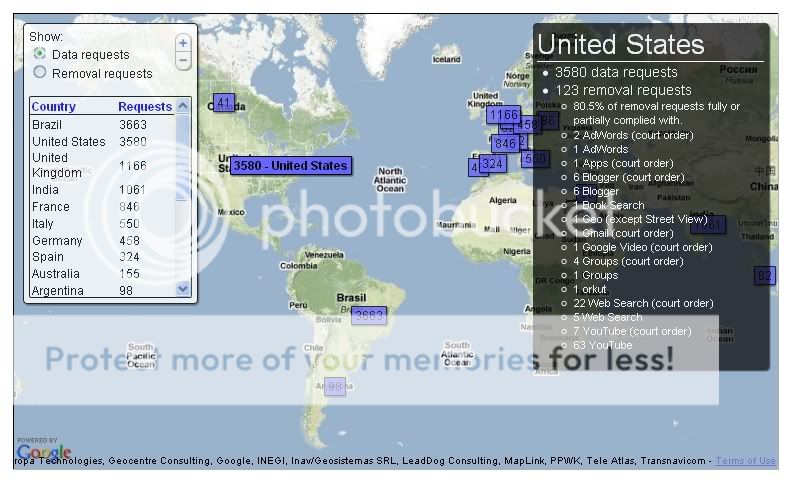U.S. and Brazil lead Google’s Top 10 Censorship List.
Yes, you read that right.
Brazil and the U.S. are the respective #1 and #2 on Google’s Top 10 Censorship List.
China is hardly the world’s only Internet censor.
According to information released April 20, 2010 which excludes China and several other countries, Brazil and the US lead the world in the number of requests for user data and for the removal of content.
Below is Google’s Top 10 Censorship List.
Google’s Top 10 Censorship List
SVP, Corporate Development and Chief Legal Officer David Drummond wrote on the official Google blog:
We are today launching a new Government Requests tool to give people information about the requests for user data or content removal we receive from government agencies around the world. For this launch, we are using data from July-December, 2009, and we plan to update the data in 6-month increments. Read this post to learn more about our principles surrounding free expression and controversial content on the web.
We already try to be as transparent as legally possible with respect to requests. Whenever we can, we notify users about requests that may affect them personally. If we remove content in search results, we display a message to users. The numbers we are sharing today take this transparency a step further and reflect the total number of requests we have received broken down by jurisdiction. We are also sharing the number of these content removal requests that we do not comply with, and while we cannot yet provide more detail about our compliance with user data requests in a useful way, we intend to do so in the future.
Google’s Government Request Tool
The message from David Drummond is clear:
Government censorship of the web is growing rapidly: from the outright blocking and filtering of sites, to court orders limiting access to information and legislation forcing companies to self-censor content.
To address this, Google releases the Government Request tool mentioned above. Here’s a screen shot, highlighting the government requests from the United States between July 1, 2009 and December 31, 2009 (click for larger image).
The Google Government Request tool shows 2 kinds of requests: data requests and removal requests. Removal requests ask for removal of content from Google search results or from another Google product, including YouTube. For purposes of this report, data requests ask for information about Google user accounts or products.
How Accurate is this Data?
Google indicates that while they have tried to report as accurate a number as possible, the statistics are not 100% comprehensive or accurate.
For example, we have not included statistics for countries where we’ve received fewer than 30 requests for user data in criminal cases during the 6-month period. Where the numbers of requests are relatively low from a particular country, revealing the statistics could place important investigations at risk and interfere with public safety efforts of the authorities. For content removals requested by government agencies, we haven’t released specific numbers for those countries in which we received fewer than 10 requests. Many of those one-off requests may coincide with our own content policies, so when the numbers get small enough, they don’t necessarily reflect anything about the level of censorship in that country. Similarly, if a governmental agency used a web form to demand removal of content, we generally have no way of including those reports in our statistics.
However, it is a great start for Google.
Keep an Eye on Big Brother
To find more information reports about government requests for information and content removal, you can contact government independent organizations such as Chilling Effects and the Open Net Initiative.


